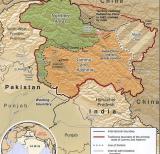 China has made the proposal as part of the Border Defence Cooperation Agreement (BDCA) which is under negotiation between the two countries, highly-placed sources told PTI here.
China has made the proposal as part of the Border Defence Cooperation Agreement (BDCA) which is under negotiation between the two countries, highly-placed sources told PTI here.
In the proposal, which is in the form of a paragraph in the BDCA, the Chinese side has said there should be a freeze on development of infrastructure in any 'disputed area', they said.
India is set to reject the proposal in its response expected to be conveyed to China by the end of this month, the sources said.
India is in the process of major infrastructure building exercise along the LAC and the Chinese proposal appears to be aimed at scuttling that.
The BDCA was proposed by China during the Defence Secretary-level talks earlier this year.
Sources said the proposed pact would be a "comprehensive" one encompassing some of the protocols and agreements signed by the two countries in the past.
The border pact is aimed at avoiding flare ups on the boundary between the two countries.
Other proposals made under the pact include non-tailing of troops if noticed during patrolling along the disputed Line of Actual Control and to not fire at each other under any condition.
India and China have held several discussions on the BDCA during the recent past but after incursion by Chinese troops in Ladakh region of Jammu and Kashmir in April, the movement on the proposed act has increased.
During Defence Minister A K Antony's recent visit to China, the two sides agreed to conclude negotiations on the pact at an early date.
After Antony's talks with Chinese leaders, the two sides agreed on a slew of confidence building measures, including having greater frequency of meetings at the border and increased exchange of visits of both young and senior armed forces officials.
India and China have also agreed to resume their Army-to-Army exercise to be held in China in October this year in the Chengdu military region.
The two countries have also agreed to further strengthen the existing agreements and protocols between the two sides and emphasised the importance of enhancing mutual trust and understanding between the two militaries for maintaining peace and tranquility on the border.





Comments
Add new comment